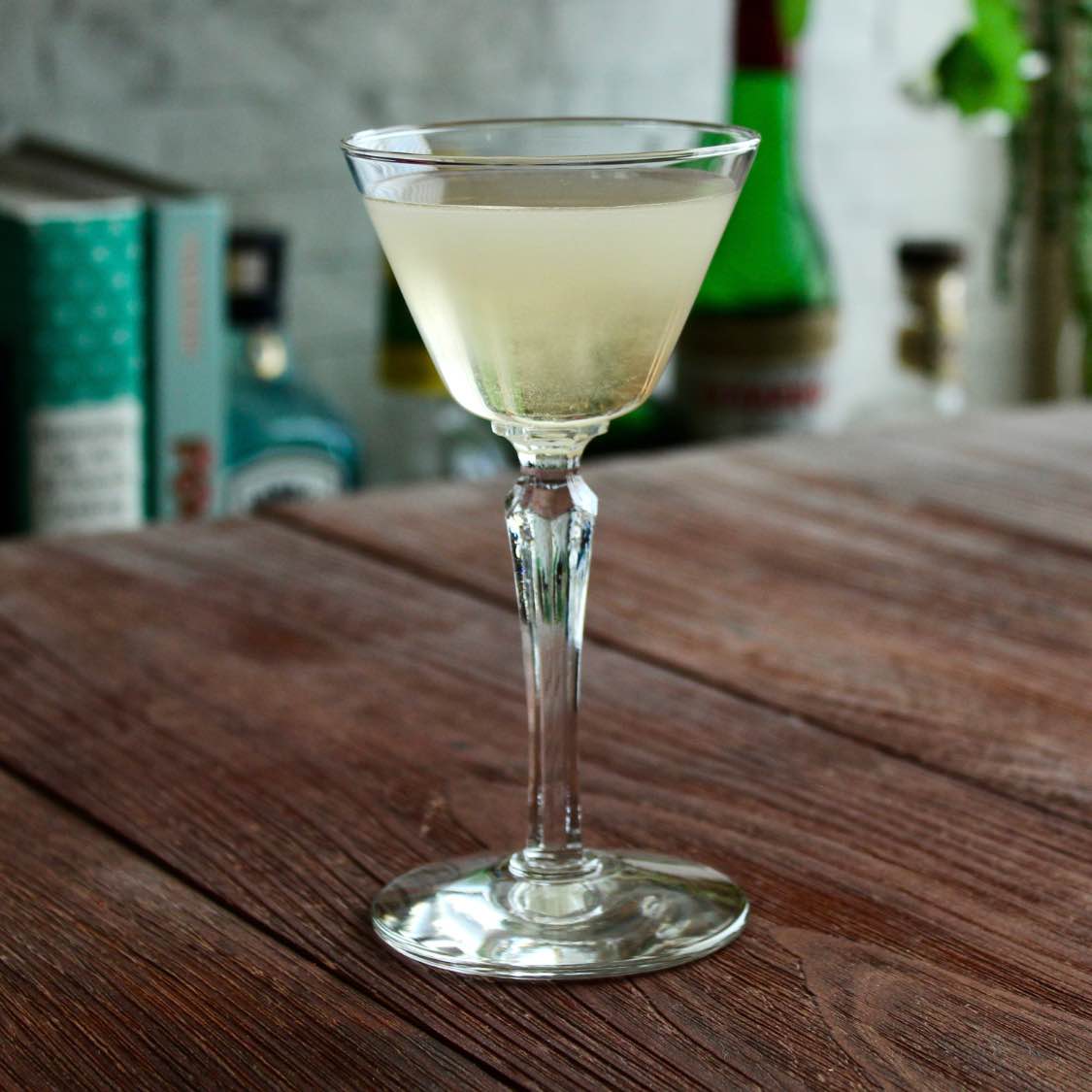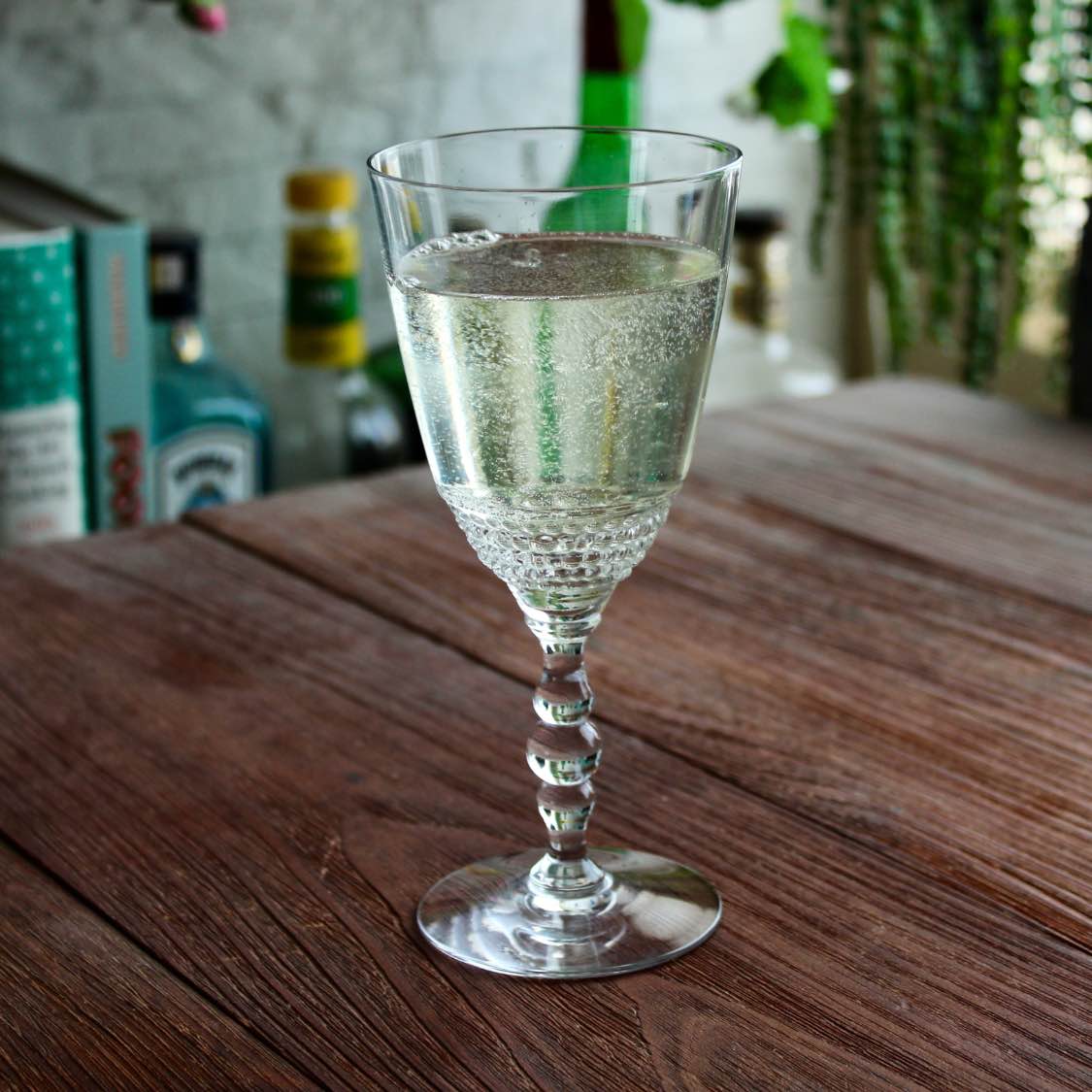Featured Video
The History Of The Blue Moon
There seem to be as many Blue Moon recipes as cocktail books. The recipes, for the most part, are similar, but they all seem to use a different liqueur to add sweetness and color. After reading a few recipes, understanding the history of Creme de Violette, Yvette, and Parfait d’Amour, and reading David Embury’s surprise to discover about blue Curaçao, I realized, It doesn’t matter what liqueur you use as long as the color is right.
Hugo Ensslin uses Creme Yvette, Harry Craddock uses Maraschino liqueur with blue food dye, David Embury uses Creme Yvette or Parfait d’Amour and says even Blue Curaçao is fine. The 1945 official Chicago bartenders recipe uses Creme de Violette. The list goes on and on, but the similarity they all share is gin, lemon or lime juice, and a blue/purple-colored liqueur.
The oldest Blue Moon recipe I can find is the Hugo Ensslin recipe from his 1917 Book “Recipe For Mixed Drinks.” Creme Yvette would give the drink a red color, so Yvette is an odd choice. The next one comes from Harry Craddock, who called the drink a Blue Devil and used Maraschino liqueur with blue food dye. The Blue Moon sometimes goes by the name the Blue Devil, and David Embury’s 1948 book “The Fine Art Of Mixing” refers to it by both names. He also seems indifferent to using any specific liqueur. In addition, below the recipes tells a story about how he heard of people using blue Curaçao, which he had never heard of before. After looking into it more, he learned blue Curaçao is nothing other than normal orange liqueur with blue food dye, and how that’s fine too. None of these bartenders seem concerned with the exact taste, just how it looks.
What Is The Difference Between Crème de Violette, Creme Yvette, And Parfait d’Amour?
Most older recipes will list these ingredients side-by-side as being interchangeable in a particular recipe. Not because the three taste the same but because they tend to share a similar purple/reddish color. A Blue Moon wouldn’t be a blue moon if it didn’t look blue. Even though they look similar, they all have different flavors.
- Creme de Violette: Violet-flavored liqueur.
- Creme Yvette: Honey, orange, vanilla, strawberries, blackberries, and raspberries.
- Parfait d’Amour: Different tastes for every brand. Common flavors are typically orange, rose/violet, bitter almond, citrus, herbs, etc.
Any violet-flavored liqueur is a Creme de Violette. The Austrian-based company Rothman & Winter is the most popular in the United States, but there are a few other manufacturers. Creme Yvette was a liqueur originally manufactured by Charles Jacquin et Cie, Inc. in Philadelphia, Pennsylvania, but production of it stopped in 1969. In 2010 Creme Yvette was brought back into production by Robert Cooper of Cooper Spirits Co. Robert Cooper is the inventor of St. Germain and the son of Norton Cooper, who was the previous owner of Charles Jacquin et Cie, Inc. Parfait d’Amour, on the other hand, is a bit of a free for all when it comes to flavor. A few different manufacturers make it, and each has its own recipe. The most common flavors are bitter almond, rose, orange, and vanilla.
In addition to color, another similarity these three liqueurs have in common is they are difficult to find. Used in a few cocktails before prohibition, Creme de Violette provided a nice floral flavor and gave their drinks a unique blue/purple color. It stopped being imported during prohibition, but Creme de Violette never returned once it ended.
After prohibition ended, many cocktails that used Creme de Violette began substituting with Creme Yvette or Parfait d’Amour. In the 1948 edition of David Embury’s book “The Fine Art of Mixing Drinks,” he lists Creme Yvette or Parfait d’Amour as the liqueurs to use in a Blue Moon. Below the recipe, he even mentions just using blue curaçao. It’s not the taste that’s important but the color. In 2007 the Austrian company Rothman & Winter began importing Creme de Violette into the United States. For the first time in nearly 90 years, making pre-prohibition cocktails that used it became possible. As a result, Creme de Violette has become popular in the last decade along with anything that gives drinks a blue or purple color and looks Instagram-able.
Recipe Resources
- 1917 Recipes For Mixed Drinks – Ensslin
- 1930 The Savoy Cocktail Guide – Craddock
- 1961 The Fine Art of Mixing Drinks – Embury
- 1945 Chicago Bartenders and Beverage Union
NOTE: I have linked to the 1961 edition of the Embury book as that is the only one I can easily find online to link to, but the Blue Moon recipe is the same as the 1948 edition.










Leave a Reply